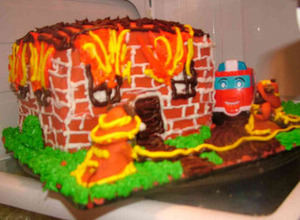For most dogs, poor appetite is not a problem. Most of us, most of the time, have to work hard to keep our dogs from overeating, stealing food, and begging for more. So when a dog goes off his or her feed, it can be bewildering as well as a concern. First and foremost, a sudden refusal to eat means a trip to the veterinarian is in order. There are many possible reasons why a dog might stop eating, some of which are potentially life-threatening.
These tips are for when you know why your dog isn’t eating. For example, your dog might be off his feed if he’s recovering from surgery, or she might lose her interest in eating if she’s been ill. Antibiotics, necessary as they are for fighting infections, can cause tummy upsets that lead to food refusal. This last is particularly frustrating when the antibiotics are intended to be given with food in order to protect your dog’s digestive system. Chronic health conditions and the drugs required to manage them can also decrease your pet’s appetite. This last can be a particular issue for older animals, and getting good nutrition into them can be a challenge.
So here are five tips that we have collected from trial and error, as well as developed from suggestions made by our dog’s veterinarians.
1. Try smaller, more frequent meals — If you normally feed twice a day, try dividing your dog’s ration into four or five mini-meals. You can keep a “food diary” to keep track of how much food your dog is getting over the course of a day. If he refuses the offered food, wait an hour and try again.
2. Dogs eat with their noses – Give them something smelly to enjoy! Try adding a water-packed, salt-free sardine to your dog’s regular food. If your dog tolerates dairy foods, a little cheese or a generous spoonful of plain yogurt can also increase the appeal.
3. Warm it up – Warming your dog’s food helps to release the smells that can stimulate your dog’s appetite. I’ve taken to warming our dog’s food in a sauté pan with a half teaspoon of olive oil. Just the act of “cooking” will often bring him into the kitchen in anticipation, where just presenting it cold would leave him uninterested. I even make “gravy” for him by deglazing the pan with a little water, and pouring that over his food as well. Be careful to let the food cool until it’s no longer steaming before feeding. The food should only feel warm to the back of your hand – like a baby’s bottle!
4. Make it soupy – Try adding some low-sodium broth to your dog’s food. Sometimes just getting your dog licking and lapping the liquid is enough to get them eating. It’s almost as if a reflex takes over and before you know it, the bowl of food is empty. Similarly, if they’ll lick food off your fingers, they may move on to finish off the rest.
5. Make it yourself – Try preparing home-made dog foods to add some variety and interest to their diet. My dog loves a breakfast of two eggs scrambled with his kibble mixed right in. There are many good recipes available on the internet, such as these at allrecipes.com, as well as many strong opinions as to what foods are best. In the end, when trying to feed your anorexic dog, any wholesome food he likes and will eat is the right one. Our dog is particularly fond of “Doggy Meatloaf With Vegetables”. It’s easily adaptable to accommodate allergies (I used potato instead of bread), or what you have on hand.
Source:
Homemade Pet Food” , Allrecipes.com





